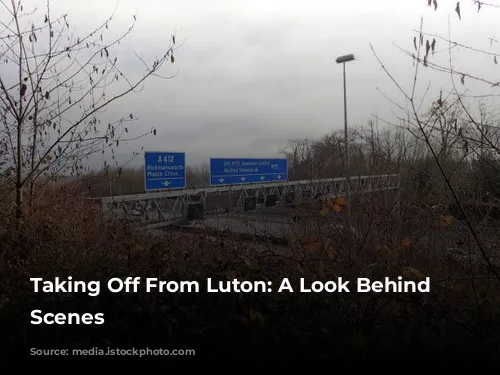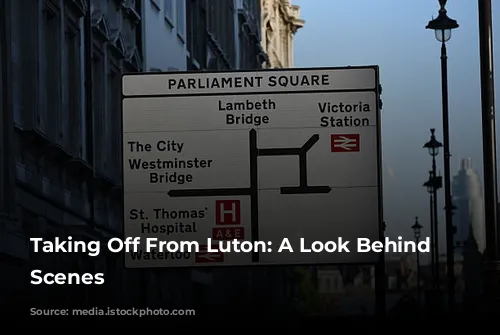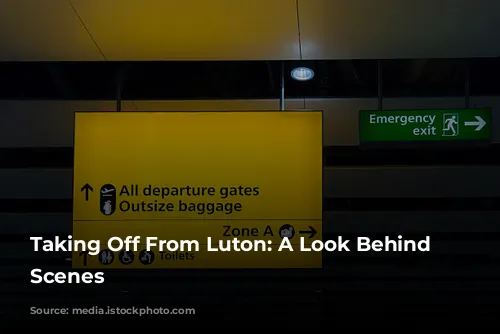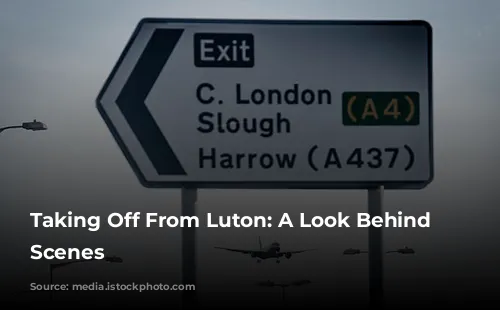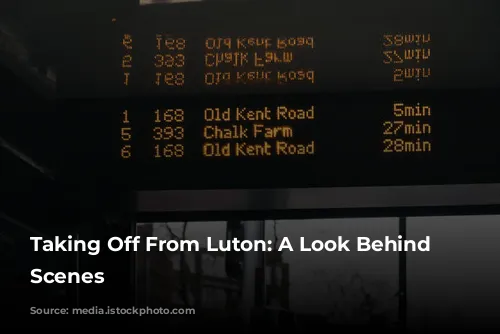Imagine taking off from London Luton Airport. You might not realize the intricate planning and considerations behind your journey. This article explores the factors that influence aircraft take-off paths, including weather, aircraft type, and noise mitigation procedures.

The Dance of the Wind and the Runway
Did you know that wind direction significantly impacts how planes take off and land? At Luton, operations are classified as either easterly or westerly, depending on which way the wind is blowing. Because safety demands that planes take off and land into the wind, this determines the direction of aircraft paths.
Luton’s weather patterns are such that westerly operations, with planes taking off towards the west, are more common, occurring around 70% of the time. Easterly operations – planes departing towards the east – occur about 30% of the time. This means that, on average, seven out of ten planes take off heading westward, and only three out of ten go east.
The frequency of these operations can fluctuate from year to year and even month to month, determined by the unpredictable nature of weather. While the runway’s operating direction could change daily, it’s not unusual for it to remain in one direction for weeks or even months.
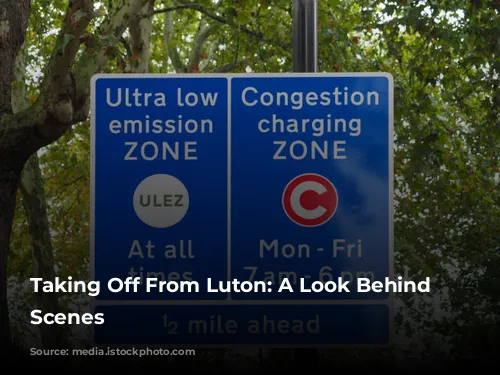
Navigating the Skies: Noise Preferential Routes
To minimize noise impact on communities near the airport, London Luton Airport utilizes Noise Preferential Routes (NPRs). These are designated flight paths that aircraft must follow, except when instructed otherwise by air traffic control.
Think of NPRs as air highways designed to avoid densely populated areas whenever possible. They ensure that planes follow a specific route from the runway until they reach major UK air traffic routes.
The effectiveness of these routes depends on various factors, including:
- The type and weight of the aircraft: Different planes have different capabilities.
- Weather conditions: Strong winds, for example, can cause planes to drift, affecting their ability to stick to a precise path.
Each NPR is defined by a corridor extending 1.5 km on either side of the center line. Planes must remain within this corridor until they reach a specific altitude: 3,000 feet during the day and 4,000 feet at night. This is known as the release altitude.
Once an aircraft reaches the release altitude, air traffic controllers may guide it onto a more direct course to its destination, which could take it outside the NPR corridor. This is called vectoring, a flexible approach that helps optimize flight routes for efficiency and safety. However, under certain circumstances, such as severe weather, aircraft might be vectored off NPRs even below the release altitude, prioritizing safety above all else.
If you live near one of these NPRs, you might notice some noise from aircraft when they are flying along that particular path.
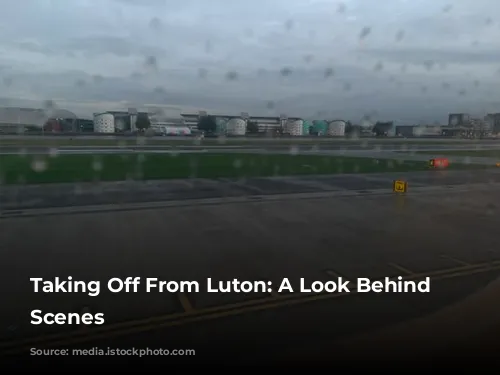
Balancing Noise and Air Quality: NADP Procedures
London Luton Airport actively works to reduce noise levels while considering air quality impacts. To achieve this, the airport implements Noise Abatement Departure Procedures (NADPs), which are designed to distribute aircraft noise in different ways.
There are two main NADP procedures in use: NADP1 and NADP2. These procedures are designed to distribute noise from aircraft differently, balancing the need for quiet skies with other operational considerations.
In August and September 2022, the airport is conducting a trial to compare the effects of each NADP procedure. Participating operators will be asked to use each NADP for a month, allowing for data collection and analysis. This data will be used to determine if certain NADP procedures offer significant benefits in terms of noise reduction and air quality.

Conclusion: A Journey of Collaboration and Innovation
This exploration of take-off procedures at London Luton Airport highlights the complex interplay of factors that contribute to a safe and efficient air travel experience. From the impact of wind direction to the careful consideration of noise mitigation strategies, the airport strives to balance operational demands with the well-being of the surrounding community. This ongoing effort, demonstrated through initiatives like the NADP trial, exemplifies the dedication to continuous improvement and the pursuit of a harmonious relationship between aviation and the environment.



